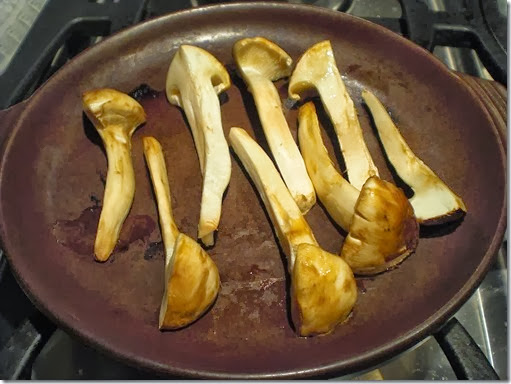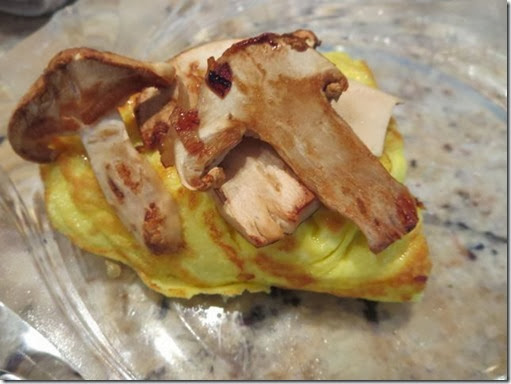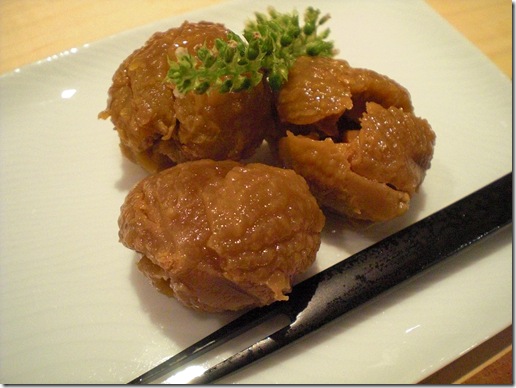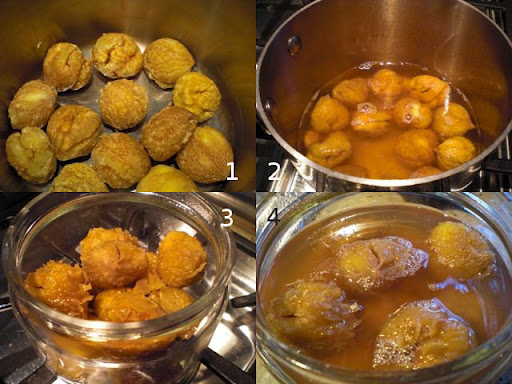When the season for chestnut 栗 and Matsutake 松茸 comes, I cannot help myself and rush to order some. I order Matsutake either from
Oregon Mushrooms or
Earthy delights. This year, I ordered from Earthy Delights. The matustake is from North America probably from Oregon or Colorado. One pound of matsutake is quite a lot. Most of the matsutake we received was just before the caps open and the quality appears much better than last year. Since I posted many matsutake dishes (
Sakamushi 酒蒸し,
Chawanmushi 茶碗蒸し,
Tenpura 天ぷら,
Matsutake rice 松茸ご飯,
Grilled 焼き松茸,
Dobinmushi 土瓶蒸し) before, I have to come up with something new. One weekend morning, my wife suggested that since truffles and eggs go well together and since matsutake is Japanese truffle, egg and matsutake should go well together. How about an omelet? This is what I came up with. I made the omelet from two eggs and we shared it.
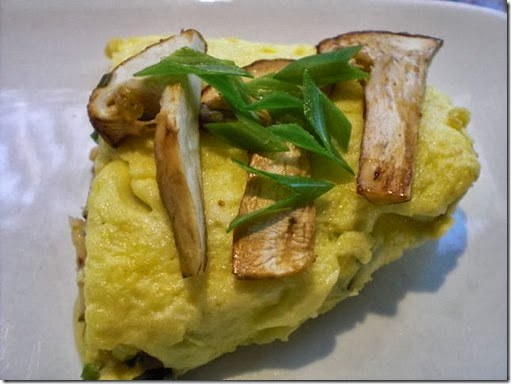
Since the flavor (smell) of matsutake is rather delicate (faint), I decide to make it as simple as possible.
Matsutake: I used three small to small matsutake (below left). As usual, I cleaned them with a wet paper towel and gently scraped the skin with a sharp paring knife. Some times embedded dirt is very difficult to remove but these matsutake were rather clean. I cut off the bottom halves of the stalks and finely chopped them. The caps and attached portion of the stalks were sliced (below right).
Scallion: I chopped up two scallions finely reserving the green part for garnish.
Eggs: I used two large brown eggs well beaten with addition of cream (2 tbs) and a pinch of salt.
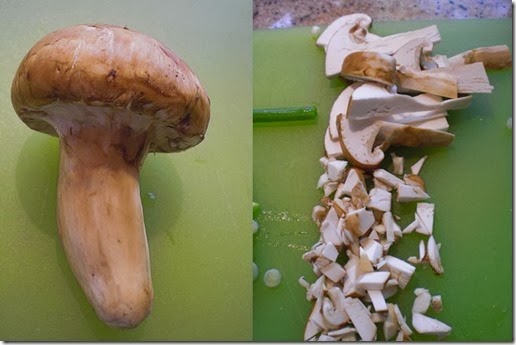
In a small frying pan, I added light olive oil (2 tsp) on medium flame. When the oil was hot, I sautéed the chopped scallion for few minutes, seasoned with salt and added the chopped up matsutake stalks. I sautéed for another 1 minutes. I pushed the chopped scallion and matsutake to one side of the pan and then cooked the slices of the matsutake turning once so that both sides had a nice color.
In another non-stick small frying pan on medium low flame, I added a pat of sweet butter (1/2 tbs) and let it melt but not brown. I poured in the egg mixture at once. Because of the cream, the omelet was rather fragile and soft. Instead of my usual way of forming the omelet as I place it on the plate, I decided to from an omelet in the pan. After I lifted the edge of the omelet as the bottom was set to let the uncooked egg to run under for several times, only just a thin coat of uncooked egg on the surface remained. I added the chopped and sautéed scallion and matsutake in the center of the omelet and using a wrist motion, aided with a spatula, I formed it to an omelet (see below).

I cut the omelet in half and garnished with the matsutake slices and green part of the scallion (The first picture).
As in the case of truffles, the delicate earthy flavor of matsutake and soft omelet are a good combination. I served it without any condiments or sauce. I even did not use pepper in the seasoning. Definitely this is a good way to bring up and enjoy the flavors (smells) of matsutake.






